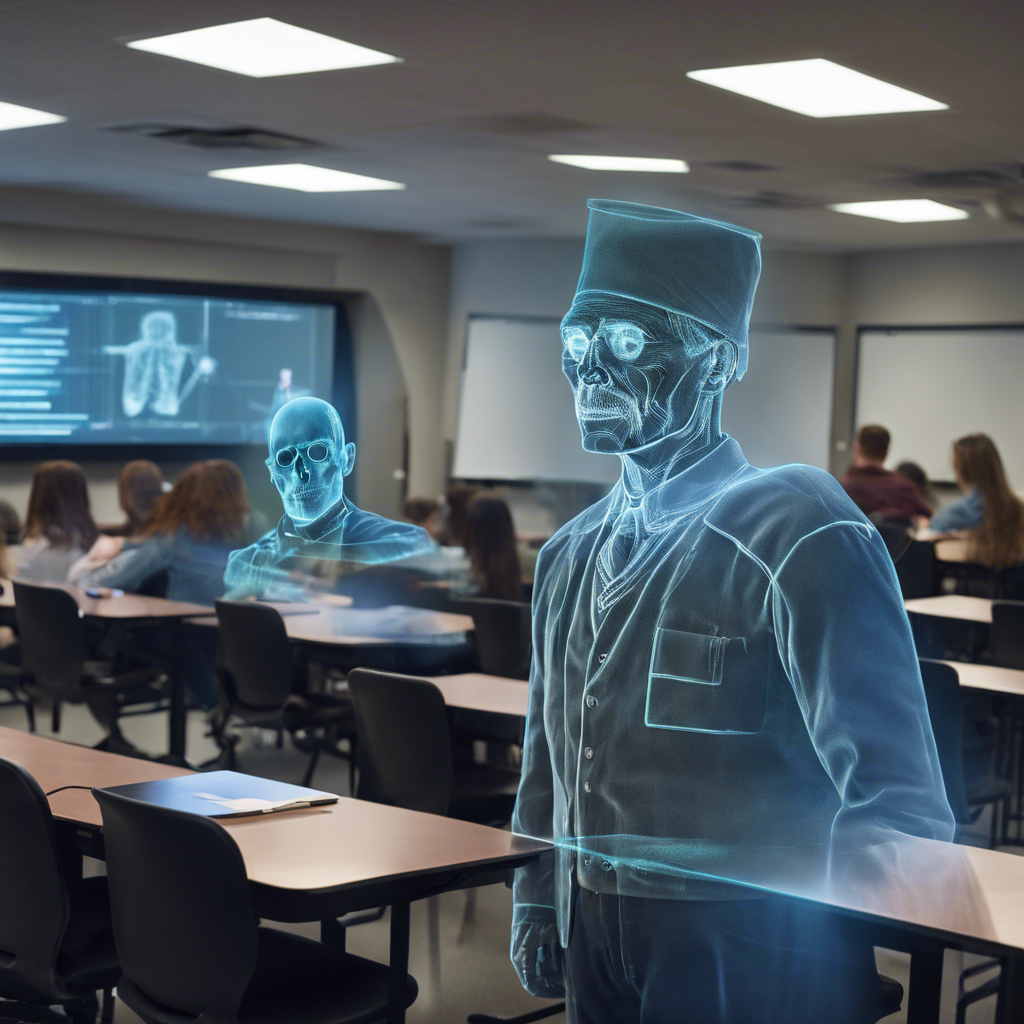Hologram Technology Brings Long-Dead Pioneers to College Classrooms

Universities are using groundbreaking hologram technology to project 3D images of renowned innovators and artists, revolutionizing the college experience.
College students may soon have the opportunity to attend lectures given by long-dead pioneers such as Albert Einstein and Coco Chanel, thanks to groundbreaking hologram technology. Some universities have already started using this innovative technology to bring some of the world’s greatest innovators and artists, like Michael Jackson, into the classroom. The holographic technology can also project 3D images of speakers from across the world, providing an immersive and interactive learning experience. This article explores how hologram technology is transforming college classrooms and the potential it holds for the future of education.
Immersive Learning Experience with Hologram Guest Speakers
Hologram technology has become a hit among college students, with many universities incorporating it into their curriculum. Loughborough University in the United Kingdom plans to project scientists from the prestigious Massachusetts Institute of Technology (MIT) using holographic technology. Students have shown great enthusiasm for this new approach to learning, preferring the immersive experience of a hologram guest speaker over a static 2D presentation. Prof Vikki Locke, director of undergraduate studies at Loughborough business school, states that students “absolutely love” the hologram guest speakers.
Proto’s Holographic Units and Their Applications
Los Angeles-based company Proto has developed box-based holographic units that are being used by major companies like BT and IBM for corporate meetings, reducing the need for travel. Proto also collaborates with fashion retailer H&M in Sweden to create interactive product displays. Proto founder David Nussbaum reveals that the company’s technology can project an image of notable figures, such as Stephen Hawking, and make it appear as if they are truly present. By connecting the holograms to books, lectures, and social media, the holograms can interact and respond to questions, providing an immersive experience for students.
Making Hologram Technology Accessible
David Nussbaum envisions making hologram technology accessible to the public, stating that “you shouldn’t have to be an eccentric millionaire or a celebrity to have a hologram.” Proto aims to roll out smaller holographic units within the next 18 months, priced at around $1,000 each. These units will allow individuals to project smaller holographic images, bringing the technology closer to everyday consumers. Nussbaum compares the product to Willy Wonka’s “Wonkavision” from “Charlie and the Chocolate Factory,” emphasizing the awe-inspiring nature of the technology.
Advantages for Education and Sustainability
The integration of hologram technology in education offers numerous advantages. Loughborough University’s pro-vice-chancellor, Rachel Thomson, highlights the sustainability benefits of hologram guest speakers. By eliminating the need for speakers to travel long distances, hologram technology helps universities reduce their carbon footprint and align with their sustainability goals. Additionally, hologram technology allows universities to bring renowned experts and speakers from around the world into the classroom, providing students with a global perspective and enriching their learning experience.
Conclusion:
Hologram technology is revolutionizing the college experience by bringing long-dead pioneers and renowned experts to the classroom. The immersive and interactive nature of holograms captivates students, providing a dynamic learning environment. Companies like Proto are making significant strides in making hologram technology more accessible to the public, with plans to release smaller holographic units in the near future. The integration of hologram technology in education not only enhances the learning experience but also contributes to sustainability efforts by reducing travel requirements. As hologram technology continues to advance, the possibilities for education and beyond are endless, offering a glimpse into a future where history and innovation come to life.

